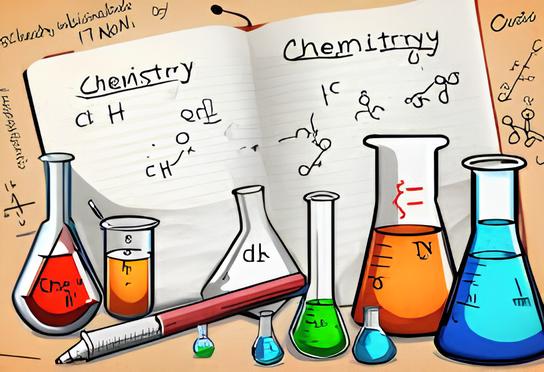JAMB Biology Note-Variation in Population
1. Types of Variation in Population
Definition of Variation
Variation refers to the differences that exist between individuals within a population. These differences may be physical (morphological), functional (physiological), or genetic. Variations are the foundation for evolutionary processes, as they allow organisms to adapt to their environments.
Types of Variation
- Continuous Variation: Variations that occur within a range and show gradual differences without distinct categories. Examples include height, weight, and skin color. These traits can be measured quantitatively and usually follow a normal distribution.
- Discontinuous Variation: Variations that fall into distinct categories with no intermediate forms. These are often controlled by a single gene and can be categorized into types such as blood groups, eye color, and tongue-rolling ability. They are qualitative traits and are typically observed in a few defined categories.
2. Morphological Variations
Definition of Morphological Variation
Morphological variation refers to differences in the structure and appearance of organisms within a population. These differences may be due to genetic inheritance or environmental factors.
Types of Morphological Variations
- Size: Differences in physical dimensions, such as height and weight. These variations are influenced by both genetics and environmental factors like nutrition and health.
- Color: Differences in skin, eye, hair color, and animal features like coats, feathers, scales, and shells. For example, animals in cold environments tend to have lighter-colored coats to blend with the snow, while those in warmer areas have darker colors to absorb more heat.
- Fingerprints: Each individual has a unique fingerprint pattern, which can be categorized into types such as loops, whorls, and arches. Fingerprints are used in forensics for identity detection due to their uniqueness.
3. Physiological Variations
Definition of Physiological Variation
Physiological variation refers to differences in the internal functions of individuals within a population. These variations often reflect genetic differences and sometimes the influence of environmental factors.
Examples of Physiological Variation
- Ability to roll the tongue: Some people can roll their tongue into a U-shape while others cannot. This trait is controlled by a dominant gene.
- Ability to taste phenylthiocarbamide (PTC): Some individuals can taste PTC, while others cannot. This ability is linked to a genetic trait, and the perception of the taste is due to the presence of specific receptors on the tongue.
- Blood Groups: There are four main blood groups: A, B, AB, and O. Each group is determined by the presence or absence of specific antigens on the surface of red blood cells. Blood group inheritance follows Mendelian patterns and is important for compatibility in blood transfusions and organ transplants.
4. Applications of Variation
Discontinuous Variation in Crime Detection
- Fingerprints: Fingerprints are unique to each individual, making them a powerful tool in crime detection. In forensic science, fingerprinting is used to identify suspects and link them to crime scenes. The classification of fingerprints helps in identifying individuals based on unique ridge patterns.
Blood Groups in Blood Transfusion
- Blood Groups: Blood transfusions require that the donor’s blood group matches the recipient’s. The main blood groups are A, B, AB, and O, determined by specific antigens present on the surface of red blood cells. Blood group compatibility is essential to avoid immune reactions that can be fatal.
- Blood Group A: Has A antigens and anti-B antibodies.
- Blood Group B: Has B antigens and anti-A antibodies.
- Blood Group AB: Has both A and B antigens and no anti-A or anti-B antibodies (universal recipient).
- Blood Group O: Has no A or B antigens and has both anti-A and anti-B antibodies (universal donor).
- Paternity Determination: Blood group testing can be used to exclude or confirm potential fathers based on the inheritance of blood group alleles. For example, if a child has blood group A, and the potential father has blood group O, he cannot be the biological father because an O blood type cannot pass on A or B antigens.
5. Measuring and Recording Variation
Measuring Continuous Variation
- Height and Weight: Students can measure their own height and weight, and those of their peers, within the same age group. After collecting data, students can calculate the average height and weight for the group.
- Plotting Graphs: Students will create graphs that represent the frequency distribution of height and weight in the class. These graphs will help them visualize the spread and variation in physical characteristics.
Recording Color Patterns in Plants and Mammals
- Students can observe and record different color patterns in plants (such as flower color) or mammals (such as fur color), noting how these patterns may vary in response to environmental conditions or genetic inheritance.
6. Classification of Fingerprints
- Fingerprints are classified into three main types: loops, whorls, and arches. These patterns are formed during fetal development and are unique to each individual, making them useful in identity detection.
- Loops: Patterns that flow in one direction and then loop back.
- Whorls: Circular or spiral patterns.
- Arches: Smooth, continuous patterns without any loops or whorls.
7. Application of Knowledge on Physiological Variation
- Blood Groups: Blood group compatibility is critical in medical procedures such as blood transfusions, organ donations, and pregnancy. For instance, a person with blood group O can donate to any other blood group but can only receive blood from another O donor.
- Discontinuous Variation: In addition to blood groups, traits like tongue-rolling and PTC tasting provide useful insights into genetic inheritance and human variation.
Blood Group Overview
Blood groups are determined by the presence or absence of specific antigens on the surface of red blood cells. These antigens are inherited from our parents, and the most commonly known blood group system is the ABO system, along with the Rh factor.
The ABO blood group system involves four major blood groups: A, B, AB, and O. Each blood group is defined by the type of antigens present on the red blood cells and the antibodies present in the plasma. The Rh factor determines whether a person is Rh-positive (Rh+) or Rh-negative (Rh−), based on the presence or absence of the Rh antigen on the surface of red blood cells.
ABO Blood Group System
| Blood Group | Antigen on Red Blood Cells | Antibodies in Plasma | Can Donate Blood To | Can Receive Blood From |
|---|---|---|---|---|
| A | A antigen | Anti-B | A, AB | A, O |
| B | B antigen | Anti-A | B, AB | B, O |
| AB | A and B antigens | None (Universal Recipient) | AB | A, B, AB, O |
| O | No A or B antigens | Anti-A, Anti-B | A, B, AB, O (Universal Donor) | O |
- Blood Group A: People with blood group A have A antigens on their red blood cells and anti-B antibodies in their plasma. They can donate blood to individuals with blood types A and AB but can only receive blood from group A and O.
- Blood Group B: Individuals with blood group B have B antigens on their red blood cells and anti-A antibodies in their plasma. They can donate blood to individuals with blood types B and AB and can receive blood from group B and O.
- Blood Group AB: These individuals have both A and B antigens on their red blood cells and no anti-A or anti-B antibodies in their plasma, making them universal recipients. They can receive blood from all four blood types (A, B, AB, and O), but they can only donate to others with the same AB group.
- Blood Group O: Individuals with blood group O have no A or B antigens on their red blood cells and have both anti-A and anti-B antibodies in their plasma. These people are universal donors, meaning they can donate to all blood groups (A, B, AB, O) but can only receive blood from group O.
Rh Factor: Positive or Negative
The Rh factor is a protein that may be present on the surface of red blood cells. If it is present, the person is considered Rh-positive (Rh+). If absent, the person is considered Rh-negative (Rh−). This factor is inherited independently of the ABO blood group. The Rh factor is important in pregnancy and transfusions, as an Rh-negative individual can produce antibodies against Rh-positive blood cells if exposed.
Paternity Determination and Blood Groups
Blood group inheritance follows Mendelian principles, and this can help in determining the biological father of a child. While blood group testing alone cannot conclusively prove paternity, it can be used to exclude a man as the father.
How Blood Groups are Inherited
Each individual inherits one blood group allele from each parent. The blood group alleles are:
- A: Dominant allele
- B: Dominant allele
- O: Recessive allele
For example:
- Parent 1 (Blood Group A) can pass on an A or O allele.
- Parent 2 (Blood Group O) can only pass on an O allele.
Given these rules, a person with blood group O can only pass on an O allele, so they cannot be the biological parent of a child with blood group A or B.
Example of Paternity Exclusion Using Blood Groups
Let’s consider the following example:
Case 1:
- Mother: Blood Group A
- Child: Blood Group B
- Father: Blood Group O
The Father with blood group O can only pass an O allele. However, the Child has blood group B, meaning the child must have inherited a B allele from the other parent (the mother). Since the father cannot contribute a B allele (because he only has O alleles to pass), he cannot be the biological father of the child.
Case 2:
- Mother: Blood Group O
- Child: Blood Group A
- Father: Blood Group A
The Father with blood group A could contribute either an A or O allele. The Mother, with blood group O, can only contribute an O allele. Therefore, the child could have inherited an A allele from the father and an O allele from the mother, making the child’s blood group A. In this case, the Father could be the biological father.
Conclusion:
- Blood group testing is useful in determining paternity because it follows predictable inheritance patterns.
- If a child’s blood group cannot be explained by the potential father’s blood group, it can be used to exclude him as the biological father.
- However, it cannot prove paternity conclusively in all cases. For example, two men with the same blood type (e.g., both having blood group A) could still both be possible fathers of a child with blood group A.
- More accurate methods, such as DNA testing, are typically used to establish paternity definitively.
Blood Transfusion Compatibility and Paternity
For paternity determination, the ABO blood group system provides clues, but for absolute certainty, DNA testing is needed.
The ABO system and Rh factor are critical in transfusions. For a successful transfusion, the donor’s blood type must match the recipient’s blood type to avoid an immune reaction.







